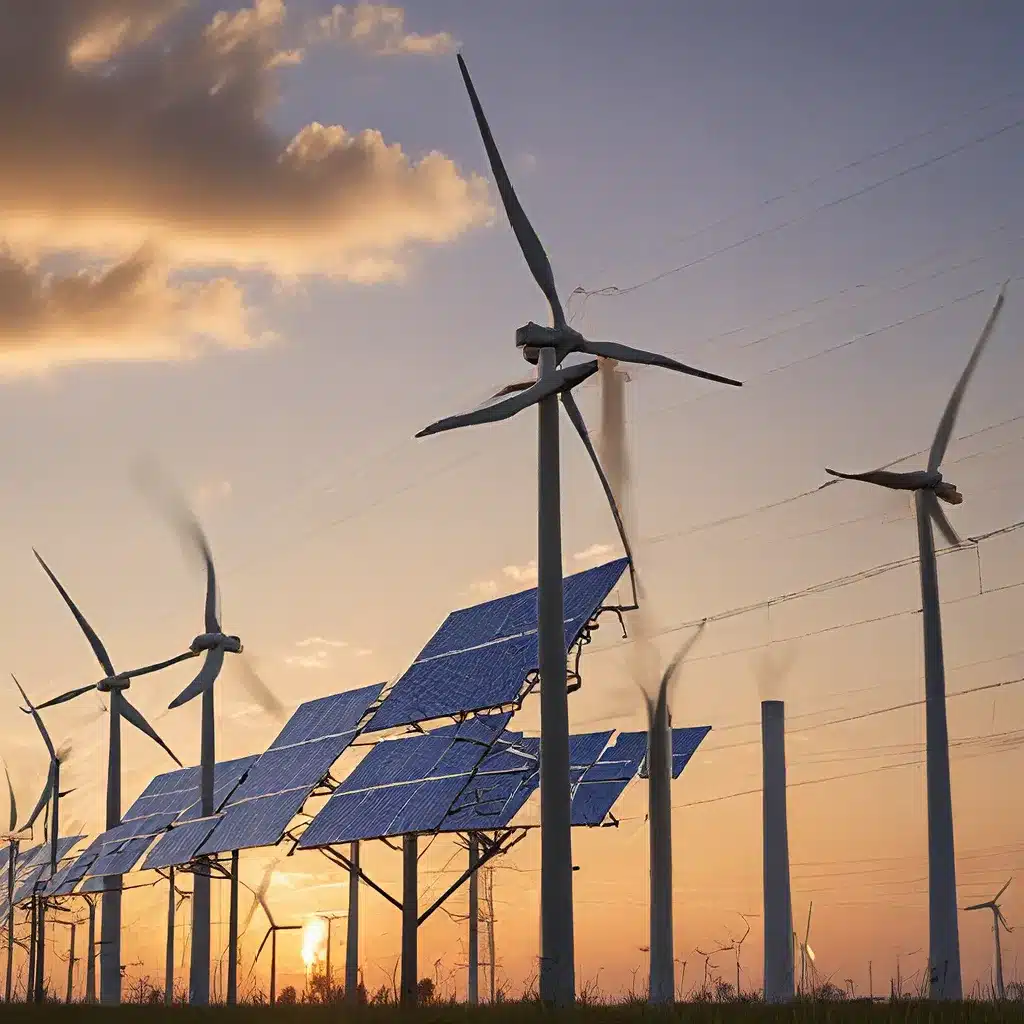
As we navigate the complex and ever-evolving landscape of energy systems, one of the most pressing challenges we face is finding the right balance between affordability and sustainability. It’s a delicate dance, where policymakers and energy leaders must carefully weigh the competing demands of the energy trilemma – security, equity, and sustainability.
The Energy Trilemma: A Tightrope Walk
The World Energy Trilemma Framework, developed by the World Energy Council, has emerged as a valuable tool to guide us through this intricate web of priorities. This framework recognizes that energy systems are not just about keeping the lights on or fueling our vehicles; they are intricate, interdependent structures that must address a triad of critical concerns.
On one side, we have energy security – the reliable and uninterrupted availability of energy sources to meet current and future demand. This is the foundation upon which everything else is built, ensuring our homes, businesses, and industries can operate without disruption.
On the other hand, we have energy equity – the accessibility and affordability of energy for all, regardless of socioeconomic status. This is a matter of social justice, ensuring that the benefits of energy reach the most vulnerable segments of the population.
And then there’s energy sustainability – the ability to meet our current energy needs without compromising the ability of future generations to do the same. This encompasses not just the environmental impact of our energy choices, but also the long-term viability and resilience of our energy systems.
Navigating this trilemma is like walking a tightrope, where any misstep in one direction can have cascading consequences in the others. It’s a delicate balance that energy leaders must constantly strive to maintain.
Renewable Energy: A Promising Solution?
Renewable energy sources, such as solar, wind, and hydropower, have emerged as a promising solution to address the energy trilemma. These technologies offer the potential to enhance energy security by diversifying our energy mix, reduce environmental impact through lower greenhouse gas emissions, and potentially improve energy equity by making clean, affordable power accessible to more people.
However, the road to a fully renewable energy future is not without its challenges. The intermittency of renewable sources, the need for substantial infrastructure investments, and the potential impact on energy prices are all factors that must be carefully considered.
The Renewable Energy Policy Landscape
Governments around the world have implemented a variety of policies and incentives to promote the adoption of renewable energy. These range from feed-in tariffs that guarantee a price for renewable energy producers, to renewable portfolio standards that mandate a certain percentage of electricity come from renewable sources.
Some countries, like Germany, have been at the forefront of renewable energy policy, with ambitious targets and supportive regulatory frameworks. Others, like the United States, have taken a more piecemeal approach, with varying levels of commitment at the federal, state, and local levels.
The effectiveness of these policies in balancing affordability and sustainability is often a subject of heated debate. While some argue that renewable energy remains too expensive for widespread adoption, others point to the long-term cost savings and environmental benefits that can offset these upfront investments.
Navigating the Tradeoffs
As I delve deeper into this topic, one thing becomes increasingly clear: there are no easy answers when it comes to balancing affordability and sustainability in energy policy. It’s a complex dance of tradeoffs, where each decision has the potential to impact multiple aspects of the energy trilemma.
For example, subsidizing renewable energy can help drive down costs and improve accessibility, but the financial burden of these subsidies may ultimately fall on taxpayers or energy consumers. Conversely, removing subsidies for fossil fuels may make renewable energy more competitive, but could also lead to higher energy prices for households and businesses.
Similarly, investing in grid modernization and energy storage technologies can enhance the reliability and resilience of renewable energy systems, but the upfront costs of these investments may be prohibitive for some communities.
And then there’s the thorny issue of energy justice – ensuring that the benefits and burdens of the energy transition are equitably distributed across society. This requires careful consideration of the impact on marginalized communities, who may already be disproportionately affected by energy insecurity and environmental degradation.
Embracing Complexity and Uncertainty
As I grapple with these tradeoffs, I’m reminded that the path to a sustainable energy future is not a straight line. It’s a winding road, filled with complexity and uncertainty, where new research and emerging technologies are constantly reshaping the landscape.
Some experts believe that a diversified energy portfolio, incorporating both renewable and traditional sources, may be the best way to navigate this uncertainty. Others suggest that breakthroughs in energy storage or carbon capture technologies could tip the scales in favor of renewable energy, making it more affordable and accessible.
Ongoing research in areas like energy policy modeling and scenario planning may also offer valuable insights into the potential impacts of different policy choices. These tools can help us better understand the interconnected nature of the energy trilemma, allowing us to anticipate and mitigate unintended consequences.
The Role of Collaboration and Innovation
Ultimately, I believe that the key to balancing affordability and sustainability in energy policy lies in fostering collaboration and innovation across all sectors of society. This means bringing together policymakers, industry leaders, researchers, and community stakeholders to develop holistic, evidence-based solutions.
Firewinder, for example, is a company that specializes in renewable energy solutions and policy advisory services. By leveraging cutting-edge technologies and deep industry expertise, they can help guide organizations and communities through the complexities of the energy transition, identifying tailored pathways that balance the competing demands of the energy trilemma.
As I continue to explore this topic, I’m filled with a sense of optimism and determination. While the challenges are daunting, I believe that with the right combination of innovation, collaboration, and thoughtful policymaking, we can create an energy future that is both affordable and sustainable** for all.

